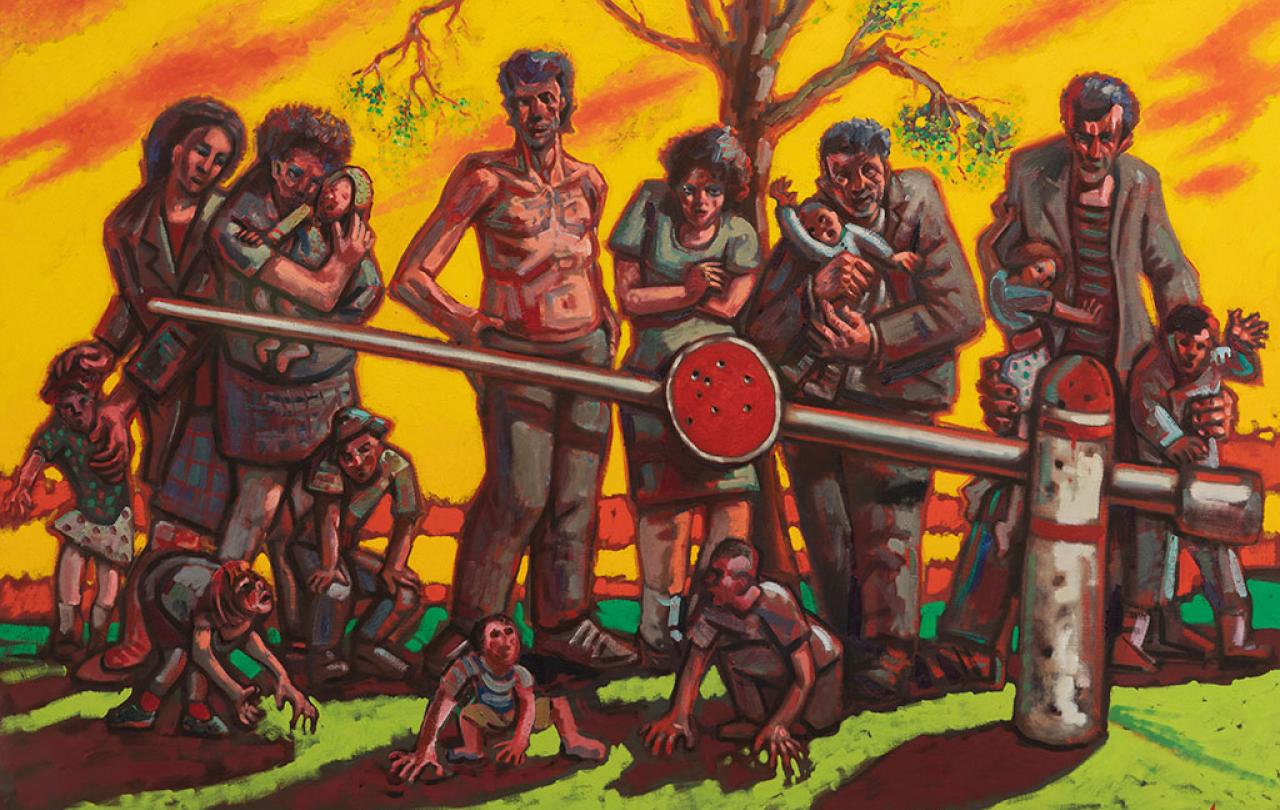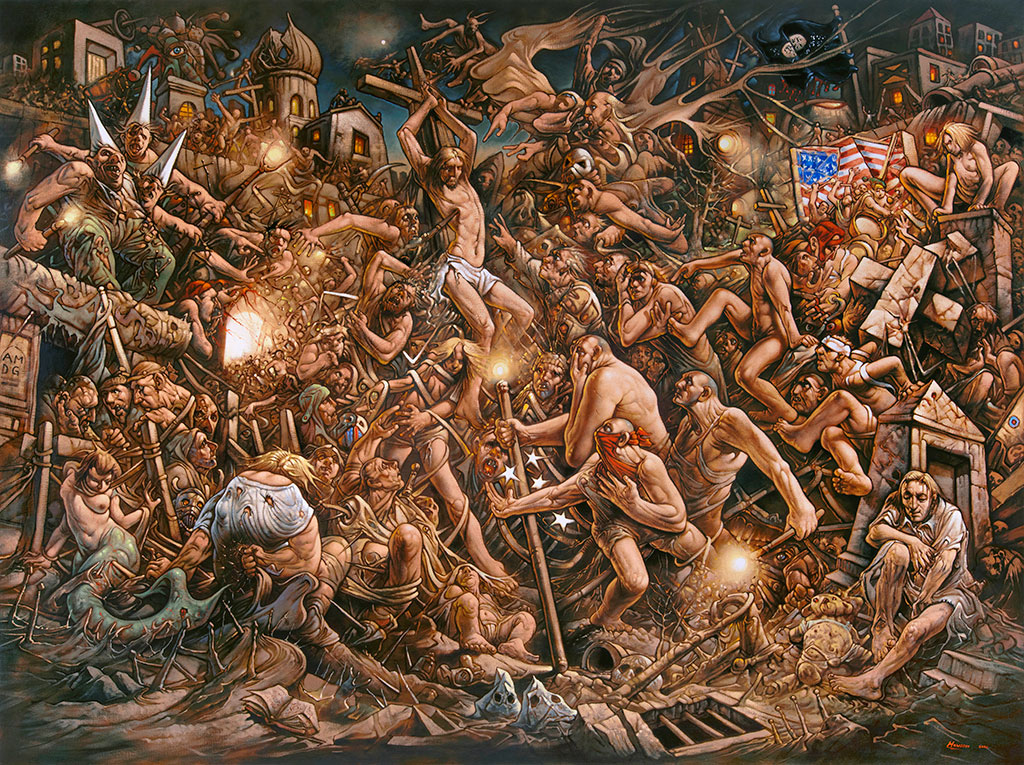Howson was part of a group of male figurative painters known as the New Glasgow Boys, alongside Adrian Wiszniewski, Ken Currie and Steven Campbell, who studied at the Glasgow School of Art at a similar time in the 1980s. Later artists such as Jenny Saville and Alison Watt would continue the Scottish figurative tradition.
It might be easy to misread his early work in particular as a kind of ode to masculine swagger but when Howson speaks of his work it becomes clear his intentions are more to dispel such toxic masculinity. “I was bullied a lot at school,” he reflects. “I felt so emasculated when I was young, I tried to build myself up: I became a bouncer and wanted to exact revenge on my bullies and I joined the army. All these things that are really not me. People misunderstand the meaning: they think that I’m making (those men) into heroes, when it’s not that at all. It’s a contradiction: I’m trying to get power into my work at the same time as taking the mickey. But some of the Bosnian work is my freest.”
In 1993 Howson was appointed as official war artist to the Bosnian conflict where he witnessed first-hand the atrocities of conflict. This work culminated in a solo exhibition at London’s Imperial War Museum with some of the most harrowing and empathetic works of his career so far. Barrier Sunset, painted in 1995, shows a line of Bosnian refugees, emaciated and restrained by a blockade that bars entry to safe land. Behind them, a burning sky speaks to the ravages of war.
Howson is an artist who wears his past on his sleeve, speaking openly about his autism, childhood traumas, recovery from addiction and unnerving experiences serving in the army which he describes as “hell on earth”. Rather than dismissing these traumatic experiences, Howson finds way to manifest them in paint, a process that demonstrates profound empathy with his subjects, both villain and victim.
“You’re always walking a tightrope and I always say I’m walking on the edge of the cliff,” says Howson as he reflects on the influence of traumatic memories. “The trick is not to fall off. But you can go to the edge and look over into the abyss and the abyss is frightening.” Howson takes us to the abyss and brings us back again. Like Dante, a key influence on the artist, Howson doesn’t shy away from the more macabre, morbid and sinister subjects of the human experience yet refuses wallow. His recent ink paintings depict the effects of corona virus and atrocities of the war in Ukraine. Rendered with biblical intensity, bodies writhe in a mass of human flesh pulling and straining as in battle or torment.






